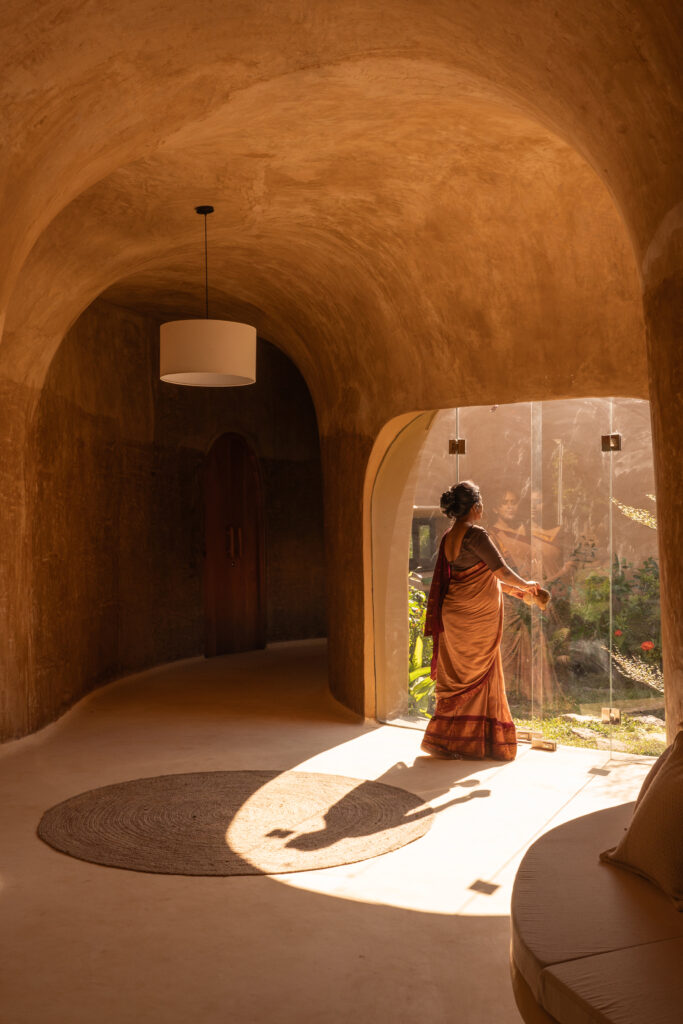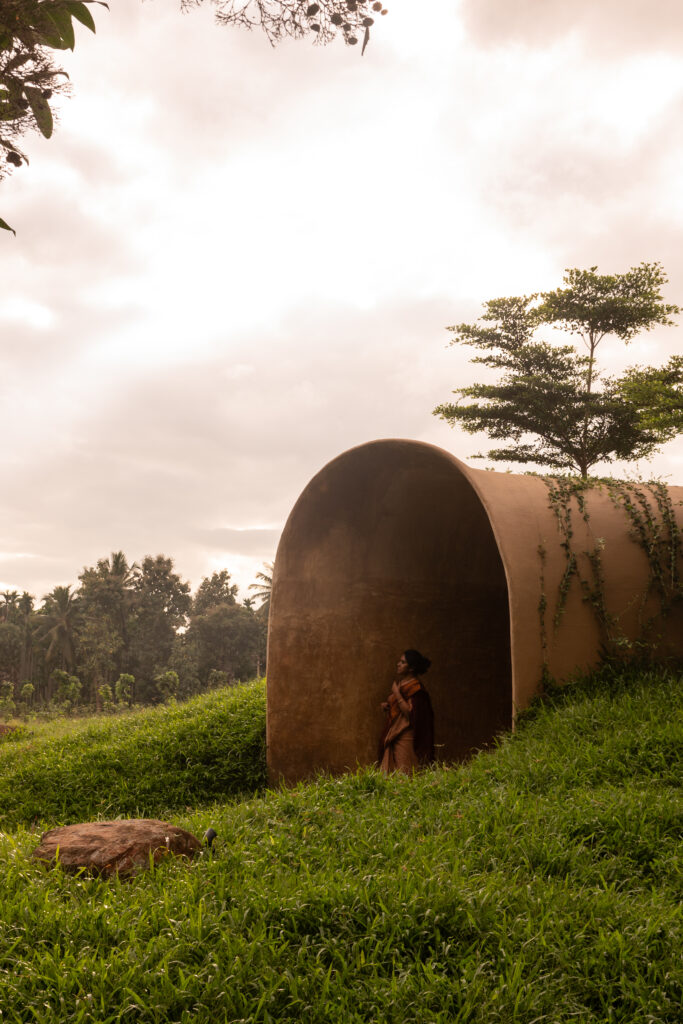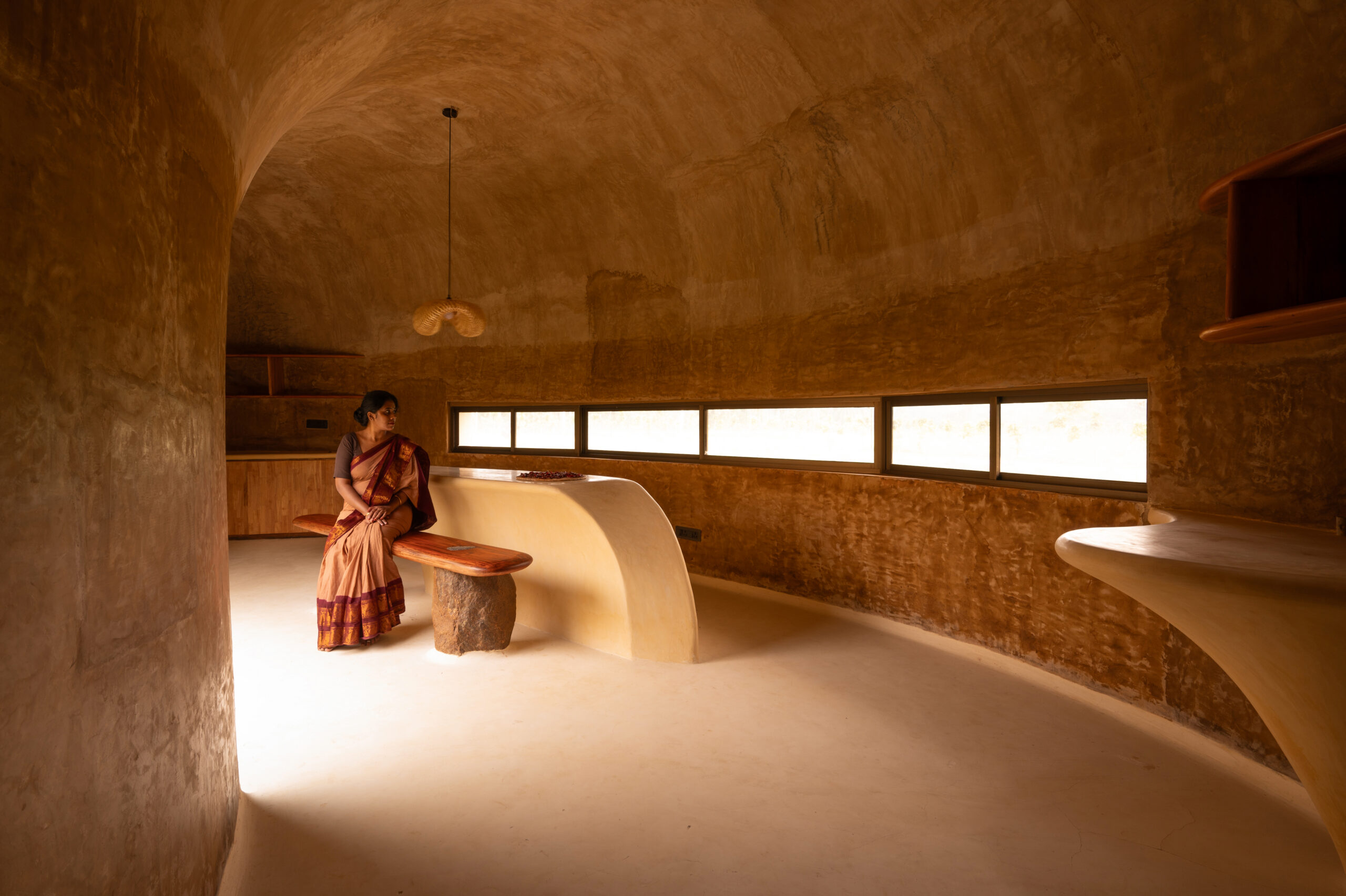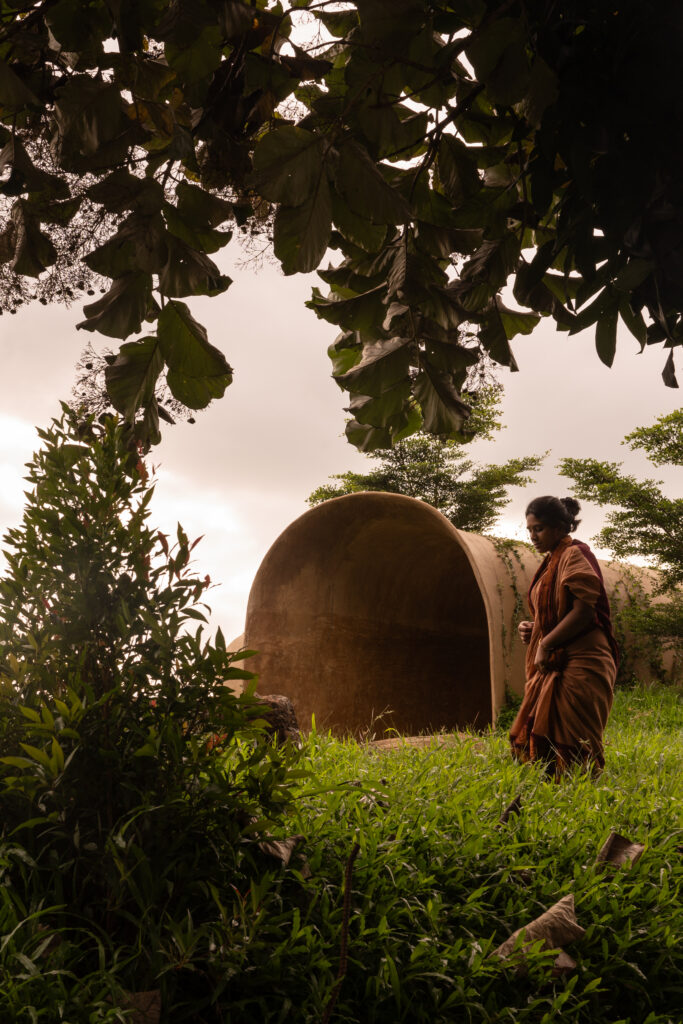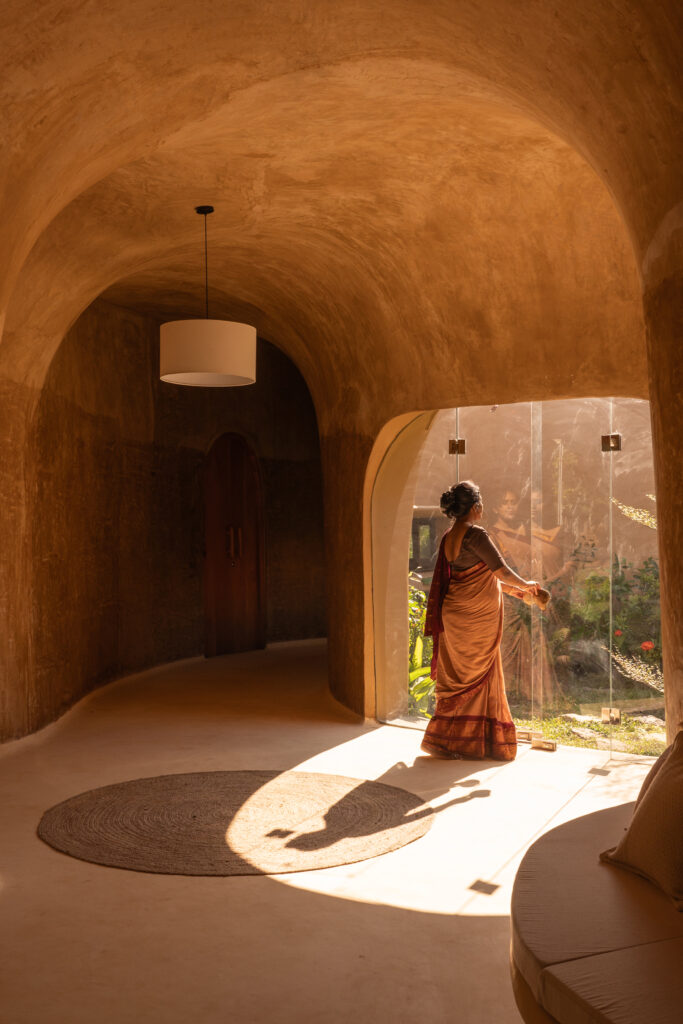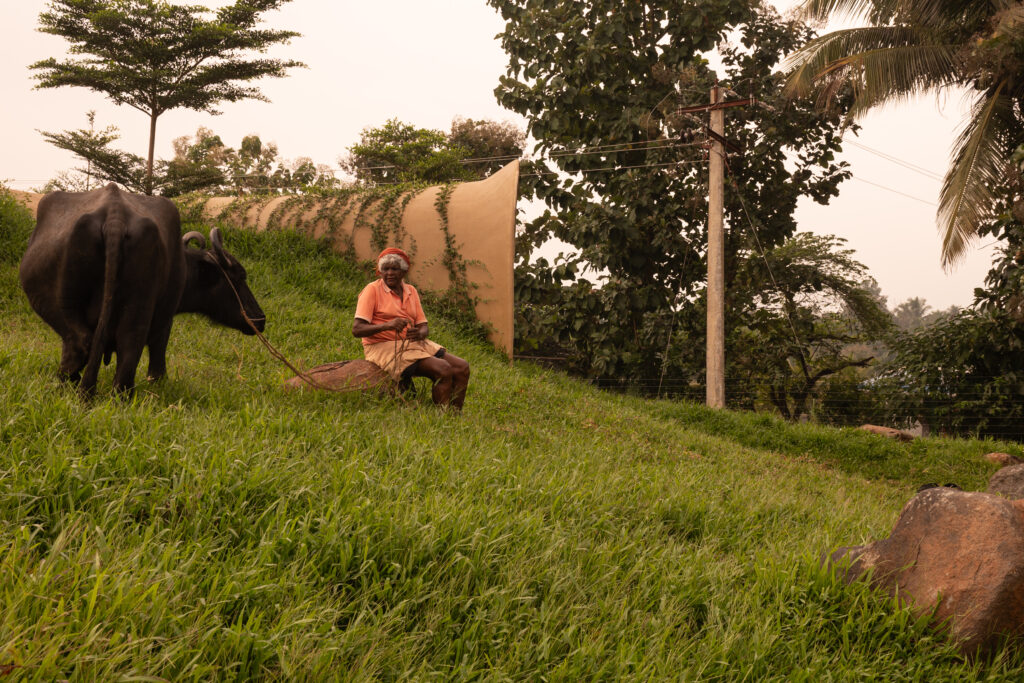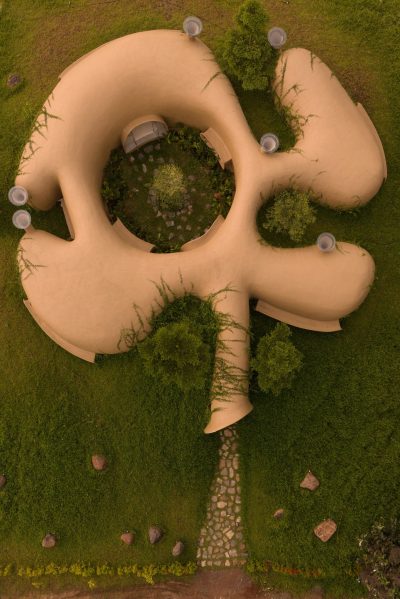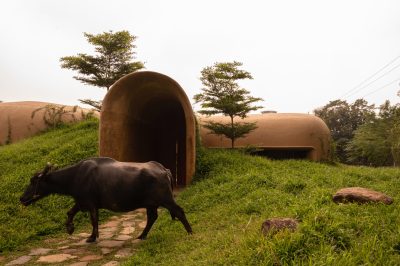INTO THE WILD : The House That Folded Itself
ARCHITECTURE | 12th May, 2025
A ferrocement farmhouse in Mettupalayam by Petchimuthu Kennedy and team reimagines architecture as land-conscious, hand-built, and elementally rooted—where the form doesn’t impose but emerges from the earth itself.
“Into the Wild” is a two-bedroom farmhouse that hides more than it reveals. Designed by Petchimuthu Kennedy along with Shivani Saran S K, Niha Ann Baby, and Sowmiya Arul, the structure is tucked quietly within a 12-acre stretch of farmland in Mettupalayam, Coimbatore—appearing not so much as a house but a form that grew from the ground. Cast entirely in ferrocement, the building uses a mere 41⁄2-inch thick shell, which bends, arches and folds to create the structure. No columns, no beams—just a continuous sweep of hand-shaped material that wraps itself into place. The choice of ferrocement is intentional. With its lightness, flexibility and thermal efficiency, it serves both purpose and principle. Kennedy’s long-held design ratio is 25:75—only 25% of the land may be built upon. The rest must remain untouched. It’s an ethic that steers not just the footprint but the attitude of the house.
The shell of the building doesn’t sit on the land; it settles into it. The form isn’t imposed, it emerges. Roofs are curved and cave-like, allowing rain to run off and air to circulate; there are no hard corners, no obvious front or back. A 71⁄2-foot-tall green turf roof extends over the structure, insulating it from the overhead heat. Outside, the walls are finished in thappi plaster—a time-honoured hand technique that uses lime and sand, giving the surface a textured, breathable skin. Inside, the walls are coated with mud plaster that cools the air and reflects the ethos of the region. The layout flows around a central open-to-sky courtyard, letting light and breeze filter into every space.
Ventilation tubes are strategically placed to channel air from one space to another, passively reducing indoor temperature by 3°C. This isn’t a climate-controlled box—it’s a building designed to adapt to its microclimate.
The spatial layout emerges from the “fold design” principle that Kennedy developed over the years, where the form folds into itself, generating rooms not through separation but through motion. As you move through the structure, each zone appears as a natural offshoot of the last. There are two bedrooms, a bar counter, a small pantry, lounge spaces, and open bathrooms that are carefully tucked in. No space is sealed off, yet everything feels private.
The shell is continuous and grounding, with low-slung windows that echo the level of the earth and ventilator cut-outs that cast a slow choreography of light throughout the day.
Every part of the house is hand-built, shaped onsite using just a few simple ingredients — lime, mud, cement, stone, and reclaimed wood. Nothing is factory-made. The floors are done in a lime finish. The bathrooms are rendered with arise plaster, a waterproof lime mixture developed specifically for wet areas. Storage units and cabinetry are crafted from reclaimed wood salvaged from local sites. The seating is cast as part of the floor. The door handles are carved out of leftover stone. There’s no paint, no wallpaper, no false ceiling. No imported furnishings or glossy distractions. Instead, the house is shaped through subtraction—built by taking away what is not needed, and allowing what remains to speak fully. It’s not just a house; it’s an idea made real through restraint, precision, and reverence for land.

EXPLORE
Information
REACH US OUT
BONAFIDE is a digital design platform that goes beyond aesthetics. We spotlight the thinking, intent, and craft behind meaningful design-not just the finished product. From architecture and interiors to product design and independent brands, we cover work that challenges the norm and pushes ideas forward.
Our content is visually sharp, editorially bold, and purpose-driven. We ask better questions, tell smarter stories, and put creative minds in focus. If you’re building something original with substance and clarity, we’re the platform that gets it, and tells it like it is.

